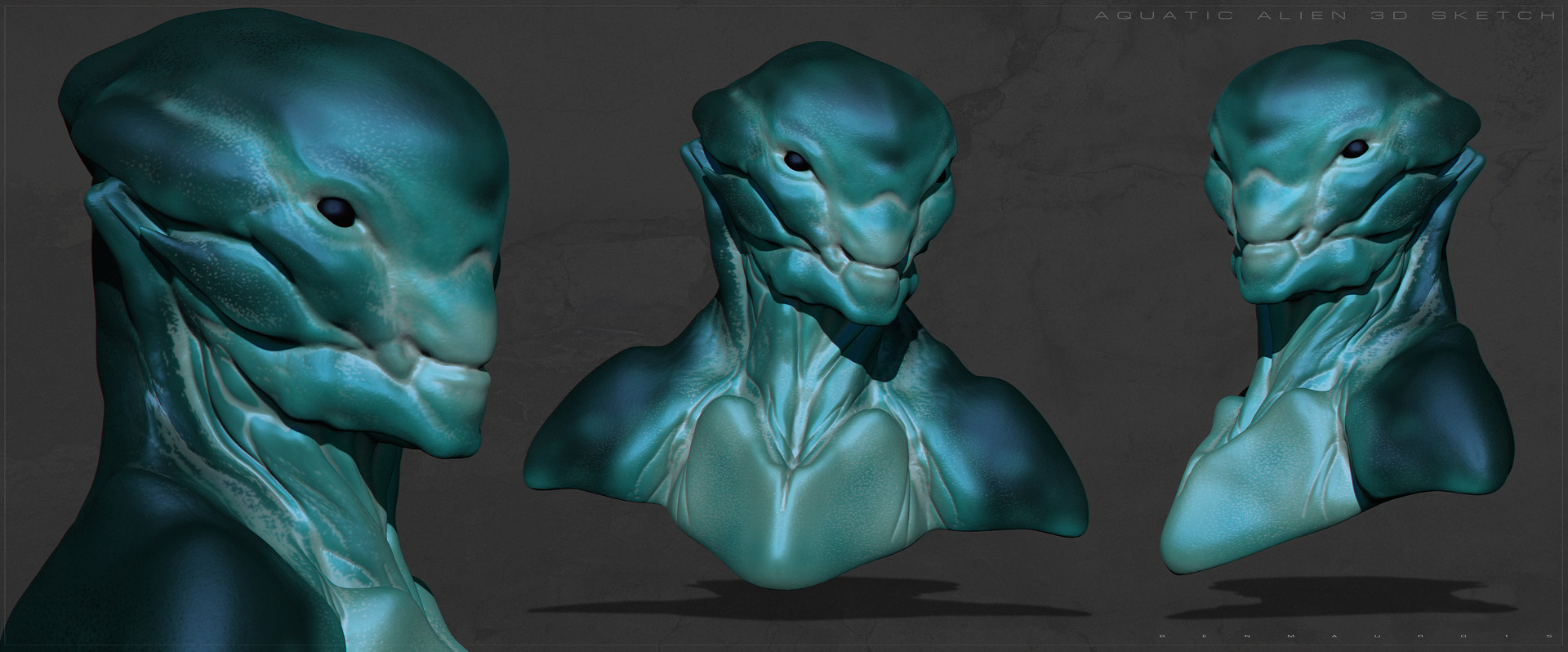 Tidehollows (Species 2515)
BIPEDAL HUMANOID
Tidehollows (Species 2515)
BIPEDAL HUMANOID
Tidehollows (
plural, Tidehollow
for singular) are a bipedal, humanoid species that is speculated to have hailed from an oceanic planet.
PHYSIOLOGY
Their outward anatomy reflects their watery origins quite pointedly, with full webbings between their toes and partial webbings between their fingers. The structure of their mouth and jaws is beaklike, allowing tearing of food into smaller pieces before it is swallowed totally. Tidehollow are technically omnivores and though they will generally prefer and gain more nutrition from meat sources, they will regularly supplement their diets with sea-based vegetation as well.
While their average height is similar to that of humans, they tend to possess bulkier builds, with thicker necks and limbs, due to the majority of their time being spent in the water. Their skin is almost rubbery in texture and their faces and stomachs are primarily blue or teal in color, with their backs being darker-colored navy or even black.
Though they have evolved to spend the majority of their time underwater, Tidehollows do not have gills and therefore cannot breathe underwater. They do have enhanced lung capacity that allows them to hold their breath for up to two hours on average. A countercurrent heat exchange physiology allows Tidehollows to maintain their own body temperature at around 25 degrees celsius, enabling them to live in a wide variety of water temperatures.
Tidehollows are oviparous and female Tidehollows will deposit anywhere from one to four egg cases after a gestation period of approximately two months. The resultant egg case hardens and develops over the next eight months, at which point a Tidehollow 'tadpole' emerges. These young differ significantly in physiology to adult Tidehollows and go through metamorphosis over the next two years, their more porous skin becoming tougher and trading in their tails and gills for lungs and legs. On average, at around three years after an egg pouch is first laid, the toddler Tidehollow is capable of fully surviving out of water and taking his or her first steps.
SOCIETY AND CULTURE
While being primarily aquatic people, as airbreathers and capable of going onto land, Tidehollows do live a not-insignificant portion of their life at the surface. Tidehollow civilizations built small floating cities that were massive enough to deter sea predators from attacking. These cities often had 'porous' undersides, allowing free movement from the water to above the surface and back again, enabling Tidehollows to mostly carry out their activities underwater while continually retaining a safe space to retreat for rest and leisure.
Family units are loose and while life partnerships can and do sometimes exist between two individuals, child-rearing is generally delegated to a community as a whole.
Tidehollow clothing is primarily form-fitting and generally made out of quick-drying synthetic materials.
TECHNOLOGY REPORT
RATING: average
Tidehollows are a very hardy species and though they certainly make efforts to take care of their sick or ailing population, the general attitude towards medical care is focused primarily on moderate and severe injuries or diseases only. Any injury that will heal quickly and safely on its own without interference is generally left to do so.
Tidehollows eschew all forms of mechanical/cybernetic enhancements, but will use organ-cloning or lab-grown organs for surgical transplants. If any injury results in permanent mutilation or dysfunction of a limb or internal organ, the medical community's most likely course of action is to replace it with a newly grown organ.
RATING: above average
Tidehollow technology is primarily notable for their work in two specific fields. Their power sources are largely fusion reaction-based, which while lacking in the sheer raw power of M/AM or singularity sources, does allow them to access a good variety of advanced society technologies, such as cosmological scientific research, weaponry and defense, and space travel.
The other field is in nanotechnology and nanotech robotics, which makes up a significant amount of their space colonization program and defense measures. The staple of Tidehollow technology is their 'autoplankton' nanotech, which consists of micro robots that are capable of binding together to form larger robots that can accomplish larger tasks. Autoplankton are usually constructed of softer materials than most civilizations would consider for automatons, such as synthetic cloths and flexible plastics.
All Tidehollow technology is equally functional in air and in water.






